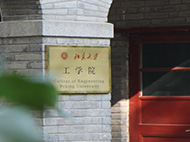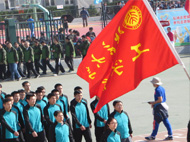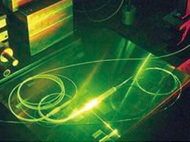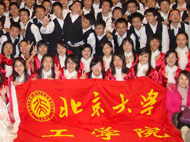主办:力学与工程科学系
报告人:贾燕斌教授
时间:7月5日(周五)10:40
地点:力学楼434室
主持人:刘才山 教授
内容简介:
The ultimate goal of robotics manipulation is to make the robot reach, if not exceed, the level of dexterity of the human being. For decades research has primarily focused on robotic maneuvers of rigid objects that are either still or in slow motions, and often confined in twodimensional workspaces. Slow advance has been made on highly skillful maneuvers, which are often dynamic, involve deformable objects, or even cause material fracture. In this talk I will report on the progress of investigating two tasks that fall outside the “mainstream” and potentially push the boundary of robotic manipulation.
Precision batting is a highly skillful maneuver that a human being must learn through a great deal of practice. In our first task, a two-degree-of-freedom (2-DOF) robotic arm intercepts an object in free flight and redirects it to some target with a single strike. Computer vision, modeling, planning, control, and action are tightly coordinated in a split second. Planning combines impact dynamics and projectile flight mechanics with manipulator kinematics and image-based motion estimation. As the object is on the incoming flight, target reaching and kinematic constraints are propagated backward and forward, respectively, to the pre-impact instant to meet with batting constraints. The arm’s pre-impact state is repeatedly planned based on updated estimates of the object’s motion captured by a high-speed camera. The arm constantly adjusts its motion in sync with planning until batting takes place. Experiments have demonstrated a better batting performance by a Barrett Technology WAM Arm than by a human being without training.
Effectiveness of cutting is measured by the ability to achieve material fracture with smooth knife movements. The work performed by a knife overcomes the material toughness, acts against the blade-material friction, and generates shape deformation. In the second task, we program a 2-DOF robotic arm equipped with a force/torque sensor to cut through an object in a sequence of three moves: press, push, and slice. For each move, a separate control strategy in the Cartesian space is designed to incorporate contact and/or force constraints while following some prescribed trajectory. Experiments conducted over several types of natural foods have shown smooth motions like would be commanded by a human hand.
报告人简介:
Yan-Bin Jia is a Professor of Computer Science at Iowa State University.His research interests in robotics include dexterous cutting, impact and impulsive manipulation, grasping of rigid and deformable objects, path planning, and tactile shape sensing. Dr. Jia received the US National Science Foundation (NSF) CAREER Award in 2002. A frequent panelist of the NSF, he is currently an associate editor of the IEEE Transactions on Robotics (T-RO), and has also served as an associate editor of the IEEE Transactions on Automation Science and Engineering (2008-2011), a co-editor of a Special Issue of the International Journal of Robotics Research (IJRR, 2000), and a member of the Conference Editorial Board of the IEEE Robotics and Automation Society (2006-2008, 2014). His papers, to most of which he has been the sole or primary contributor, have included the best paper or student paper award finalists at the IEEE International Conferences on Robotics (1996, 1998) and IEEE T-RO (2010), as well as over 250 pages published in IJRR.
In 2006-2007, Dr. Jia was visiting associate professors with the Department of Computer Science at Stanford University, and The Robotics Institute at Carnegie Mellon University (CMU). He received the B.S. degree in Computer Science from the Special Class for the Gifted Young at University of Science and Technology of China in 1988, and the M.S. and Ph.D. degrees in Robotics from CMU in 1993 and 1997, respectively.








